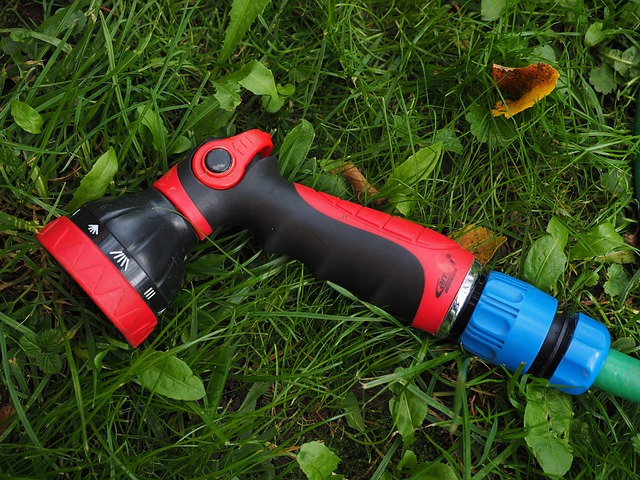When replacing your shower head, choose between handheld or rainfall options based on preferred versatility or spa-like relaxation. The installation process is simple: prepare tools, turn off water supply, remove old head, clean base, insert new head, reopen supply, and test flow. Regular maintenance involves soaking removable parts in vinegar, rinsing, reassembling, tightening seals, and inspecting for damage to ensure optimal performance and enjoyment. For guidance, refer to How to Replace a Shower Head.
Are you ready to transform your shower experience? This guide will help you navigate the world of shower heads, specifically focusing on handheld vs. rainfall options, to ensure you choose the perfect fit. Learn how to install your new shower head with ease through our simple, step-by-step instructions. Additionally, discover maintenance tips to keep your shower head clean and functioning optimally. Say goodbye to mundane showers and embrace the power of customization—it’s time to replace your shower head and elevate your daily routine!
- Understanding Your Shower Head Options: Handheld vs. Rainfall
- Step-by-Step Guide: Installing Your New Shower Head
- Tips for Maintaining and Cleaning Your Shower Head
Understanding Your Shower Head Options: Handheld vs. Rainfall

When considering how to replace your shower head, understanding the two main types—handheld and rainfall—is crucial. Handheld shower heads offer versatility and ease of use, allowing you to direct the stream wherever needed. This is ideal for those who enjoy having control over their shower experience, whether it’s a gentle massage or a powerful cleaning. They typically attach to existing plumbing with an easy-to-twist connection, making installation straightforward during your shower head replacement process.
In contrast, rainfall shower heads mimic the sensation of a warm, soothing rain, creating a spa-like atmosphere in your bathroom. These heads usually have multiple settings, from fine mist to heavy raindrop, catering to different preferences and needs. While they might require slightly more effort during installation due to additional components like water pipes and various spray patterns, the end result is a luxurious shower experience that can transform your daily routine into a relaxing ritual—an excellent option for those looking to elevate their bathroom’s ambiance.
Step-by-Step Guide: Installing Your New Shower Head

Installing a new shower head is a straightforward process that can transform your bathing experience. Here’s a step-by-step guide on how to replace a shower head:
1. Prepare Your Tools: Before starting, gather the necessary tools, including an adjustable wrench or pliers. Ensure the area around the shower head is dry to avoid any accidents.
2. Turn Off the Water Supply: The first step is to shut off the water supply to your shower. Locate the main shut-off valve under the sink or in your basement and turn it clockwise to close it. This prevents any unexpected water flow while you work.
3. Remove the Old Shower Head: Use your wrench or pliers to carefully twist and unscrew the old shower head counterclockwise. Sometimes, removing the old one might require some force, but be gentle to avoid damaging the threads.
4. Clean the Shower Head Base: After removing the old head, clean the base of any mineral deposits or residue using a mild cleaning agent or even white vinegar. This step ensures a proper seal and prevents future issues.
5. Insert the New Shower Head: Take your new shower head and align it with the existing hole in the wall. Push it firmly into place until it locks into the thread. Ensure it’s secure and turns easily to the left (clockwise) to lock it in.
6. Test the Water Supply: Reopen the main shut-off valve and check if water flows smoothly through your new shower head. Adjust any settings according to your preference, such as flow rate or spray pattern.
Tips for Maintaining and Cleaning Your Shower Head

Regular maintenance and cleaning are essential for keeping your shower head in top condition, ensuring optimal water flow, and preventing buildup or clogs. Start by removing the shower head from the pipe with a wrench or pliers. Then, disassemble any removable parts, such as jets or nozzles, to clean them thoroughly. Use a mixture of white vinegar and warm water to soak the components for about an hour, which will help dissolve mineral deposits and soap scum. After soaking, use a soft brush or cloth to scrub away any residue. Rinse all parts well before reassembling and reinstalling.
To prevent future buildup, consider using a shower head cleaner or vinegar-based solutions periodically. Additionally, regularly inspecting the seal and threads for any damage or wear and tear is crucial when it comes to How to Replace a Shower Head. Tighten any loose parts to maintain water pressure, and replace the shower head if it shows signs of severe damage or cannot be adequately cleaned. Regular care will ensure your shower head functions efficiently, providing you with a refreshing and enjoyable shower experience for years to come.
When it comes to how to replace a shower head, understanding your preferences is key. Whether you opt for a handheld or rainfall model, proper installation ensures an enjoyable showering experience. By following our step-by-step guide and maintenance tips, you can easily upgrade your bathroom and enjoy the perfect shower every day.
